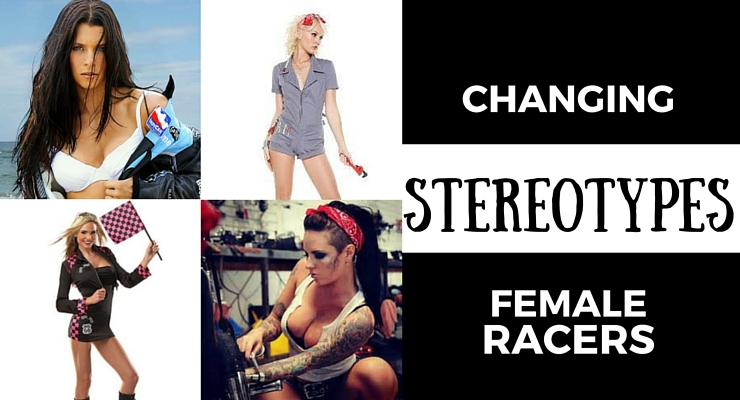 Stereotypes About Female Racers
Stereotypes About Female Racers
Do a Google search for “female race drivers.” Go ahead. See anything… interesting? Of the ten results on the first page, these are some of the headlines you might notice:
- Top 10 Hottest Female Race Car Drivers Around the World
- 8 Female Racers Hotter Than Danica Patrick
- 10 Most Appealing Female Race Car Drivers
- World’s Top Ten Hottest Female Race Car Drivers
- The 10 Hottest Female Race Car Drivers
An astounding half of the articles are about looks, and four of five use the word “hottest.”
It’s 2016. Women fight alongside their male counterparts in many of the world’s military forces, run major corporations and hold powerful positions in global politics — yet in many ways the racing world still treats women as second-class citizens.
Why is it that the motorsports community takes this outdated view of its female participants, and what can be done to change it?
A Slow Start
Motorsports started life as a male-dominated institution. People raced cars since the late 1800s, before women’s rights were even brought into question. It took decades for women to gain access to racing venues. Having managed that much, female racers face an image crisis that must be overcome to attract new young drivers.
In recent years, Danica Patrick has become the face of female racers. Patrick has demonstrated her skills in 2013 earning pole position and a top-10 finish at the Daytona 500, but her starring role in sexually charged GoDaddy advertising campaigns has been critiqued as a step backwards by her peers.
Finding a Following
But a new generation of women drivers are earning the respect of young followers by winning without seeking the attention of FHM. British driver Pippa Mann raced the Indianapolis 500 for her 5th time this year. NHRA champion drag racer John Force’s daughters, Courtney and Brittany Force, have risen to stardom in the world of drag racing, with Courtney taking home the 2016 Spring Nationals trophy. The win marked 5-in-a-row for female NHRA drag racers.
We’re competing with the guys and winning races against them,” says Force. “I think that’s making a huge impact on young fans who are watching and tuning in and seeing these girls in 10,000-horsepower cars going rounds and winning.”
Holding the Line
Indeed, wins and not just appearances are what is needed for women to be taken seriously — and for young fans to get excited about the prospect of going racing. However, the boys still hold an unfair advantage in most racing disciplines.
When there are only a handful of competitors representing your gender, the odds are stacked. This dynamic isn’t going away anytime soon, but it’s important that females realize their place in the racing world out of their own desire to compete, rather than be forced into the sport and then misappropriated as eye-candy.
I think it absolutely is possible for women to do well in F1,” says Formula 3.5 racer Beitske Visser. “Of course it would be nice if we had more girls on the grid. But it has to be something they want for themselves.”
What else can you do?
There are a number of ways to get involved, and to help change the stereotypes of female racers. It starts with focusing on gender equality as a whole, and then bringing the same ideas into racing. Both males and female can make a difference.
- Start paying more attention to female racers. This very website your on is a great place to get started, as it’s filled with tons of great resources and articles.
- Watch your mouth. Pay attention to the language you’re using, and avoid backhanded compliments like “she’s a pretty awesome driver for a girl” or “I didn’t expect her to win.”
- Get involved online. Start commenting on forums and blogs. Don’t get overly “social justice warrior” on people, but be kind and spread the word about the great things females are doing.
- Find unique ways to participate. There are tons of ways you can get involved in racing and car culture. For example, check out this awesome video Shelbie Rassler created to win a college scholarship. She made an entire song just using the sounds of a Mustang:
Source: CJ Pony Parts
Or, become a racer yourself. What better way to show that girls can race than to get out there and prove it?
The world is changing when it comes to stereotypes about female racers. Unfortunately, it still has a long way to go, but a little help can make a big impact.

 Larsen to appear on Jay Leno’s Garage
Larsen to appear on Jay Leno’s Garage